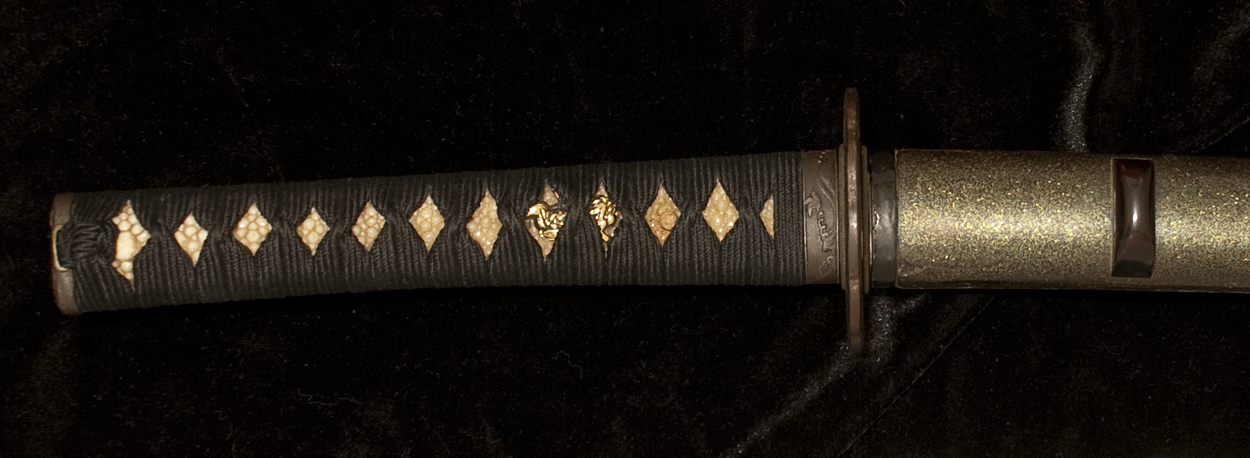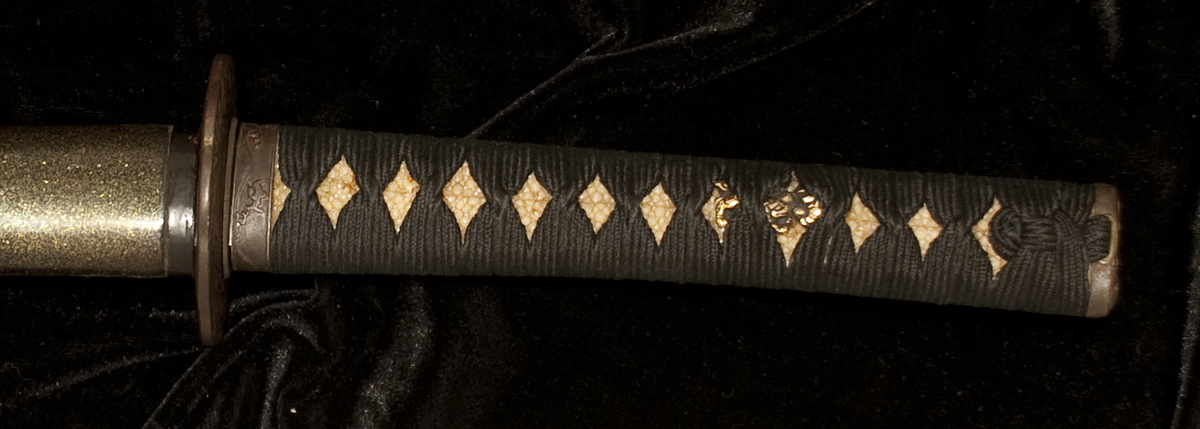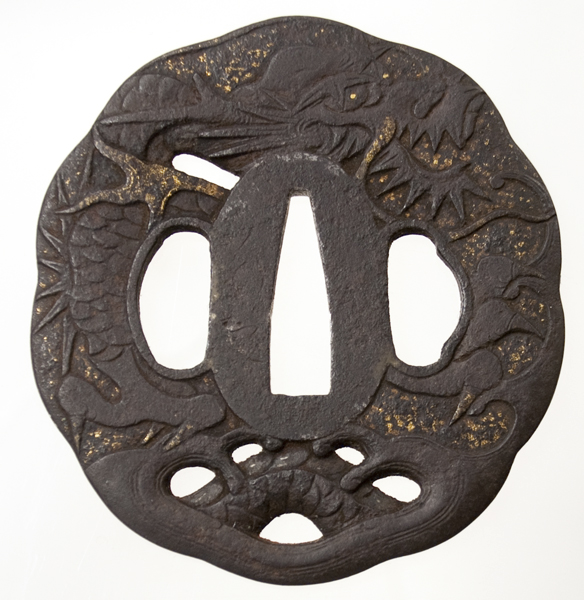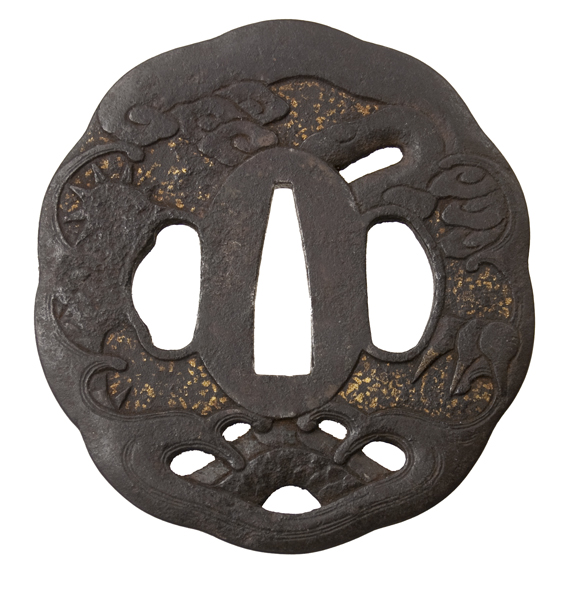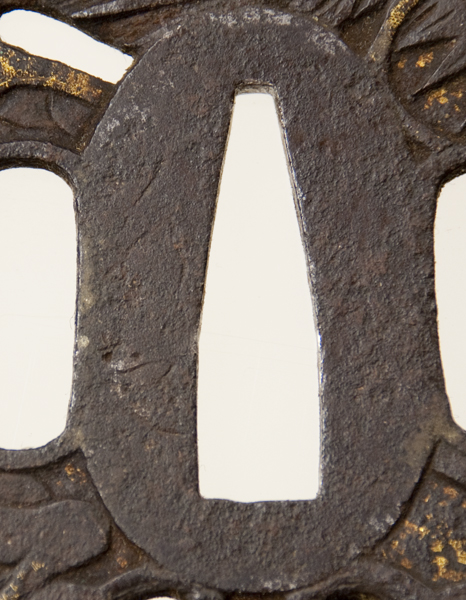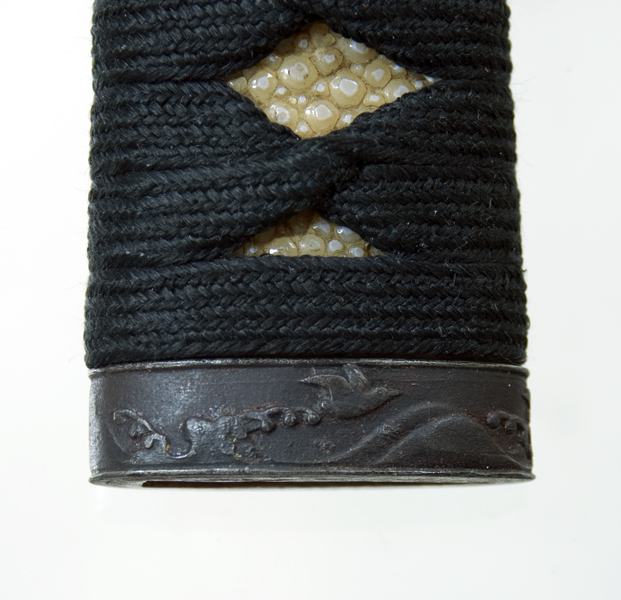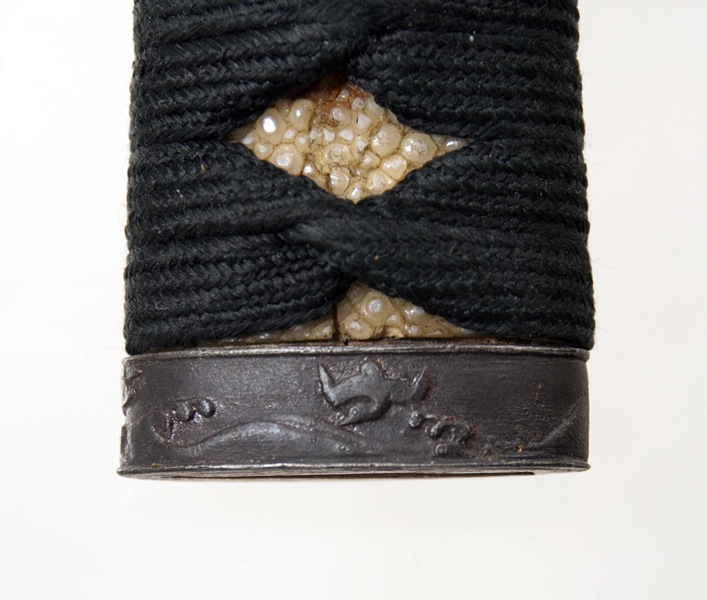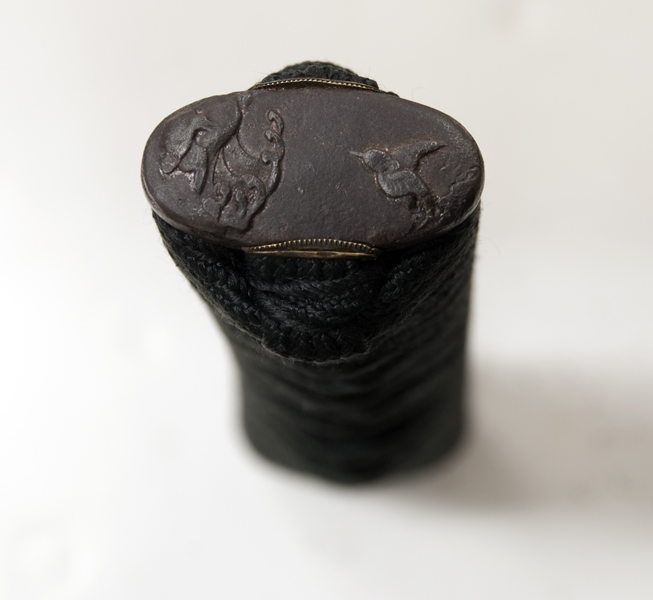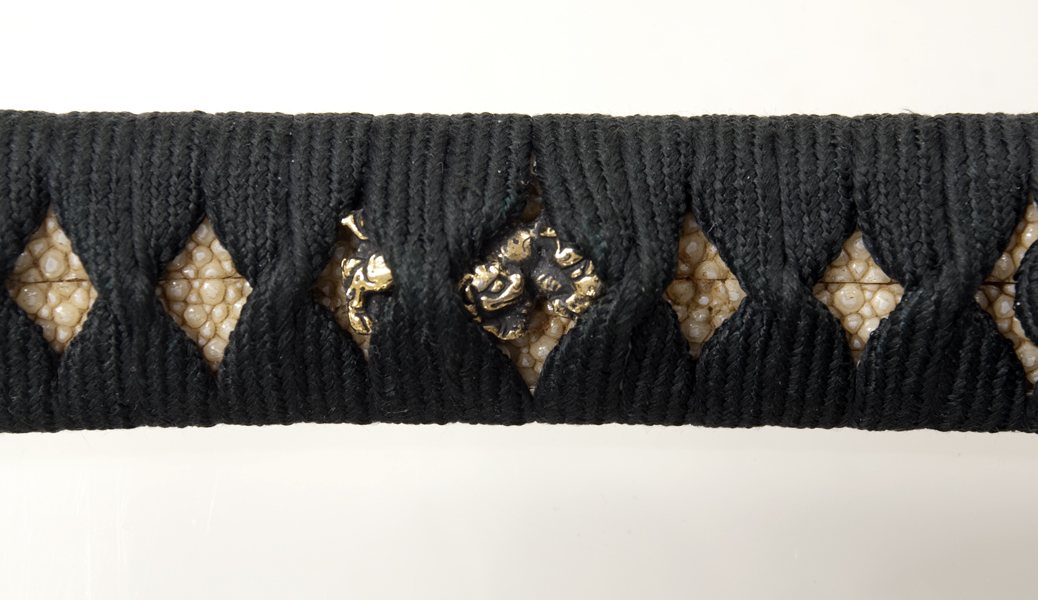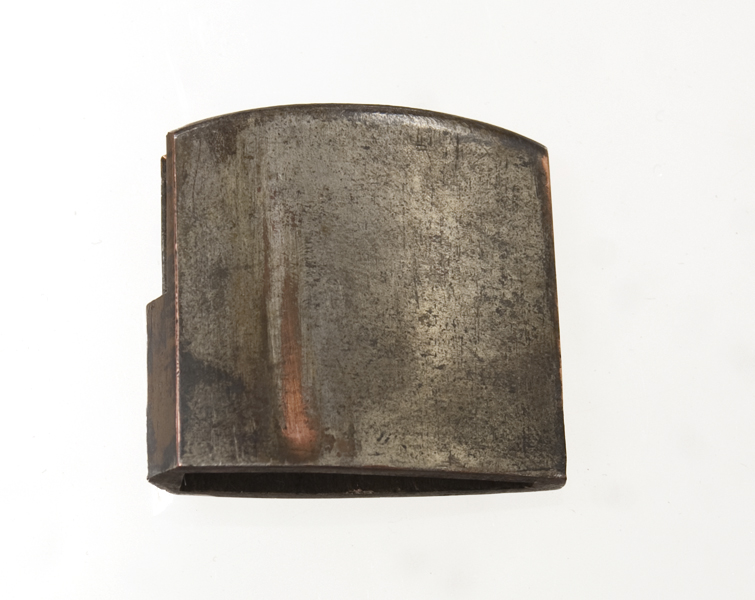|
| |||||||||||||||||||||||||||||||||||||||||
Hamon : Nioi deki gunome midare with ample nie mixed in. There is togari, hako midare and some choji formations as well. A pool of yubashiri can be seen in the monouchi on one side.
Boshi : Jizo on one side and nearly ichimai on the other. The return is very long and becomes muneyaki reaching more than halfway down the blade.
Kitae : Itame with some masame in the ha. There is ji-nie scaterd about. Chikei is quite abundant.
About this sword : This is a well made katana with a complete old koshirae. The blade is in unrestored condition. It is osuriage mumei and has three and a half mekugiana in the nakago. There is saki-zori. These features indicate that this is most likely a koto blade and probably dates to the later Muromachi period. The nioi deki hamon has togari and hako midare. The boshi is jizo and the return is long. These are common features of Muromachi period Mino works. The sugata features a high shinogi and a wide shinogi-ji. This is a Yamato trait that was passed on to the Mino smiths and is often seen in their works. We can also see an area of higaki yasuri at the nakago jiri tip. Higaki is a cris-cross pattern that was often used by Mino smiths. Based on these observations, we feel that this blade is probably a Mino work, circa 1550 or earlier. This blade has not been submitted to shinsa. The workmanship of the blade is well above average and there are no kizu. The blade is out of polish but you can still see ji-nie, chikei , mune yaki etc... There are old rust spots and scratches on the surface. Despite the condition of the polish, one can see that this is a blade with clear hallmarks of quality.
The koshirae appears to date to mid Edo times. The saya retains its original urushi finish with abalone specks and a copper kojiri. There is some missing urushi and old repairs along the side seams. The tsuba is iron and features nice carving of a dragon and gold nunome decoration. It appears to be signed but it is difficult to read the mei. The fuchi kashira are nice iron examples of waves and chidori birds. These give a feeling similar to Kamakura bori tsuba and we think they may have good age. The tsuka has same with large nodules and is very nice. The habaki and seppa match. They are copper done in a silver wash. Overall this is a nice sword and well deserving of restoration and study. It is a consignment item and the owner has priced it to move.
SOLD







